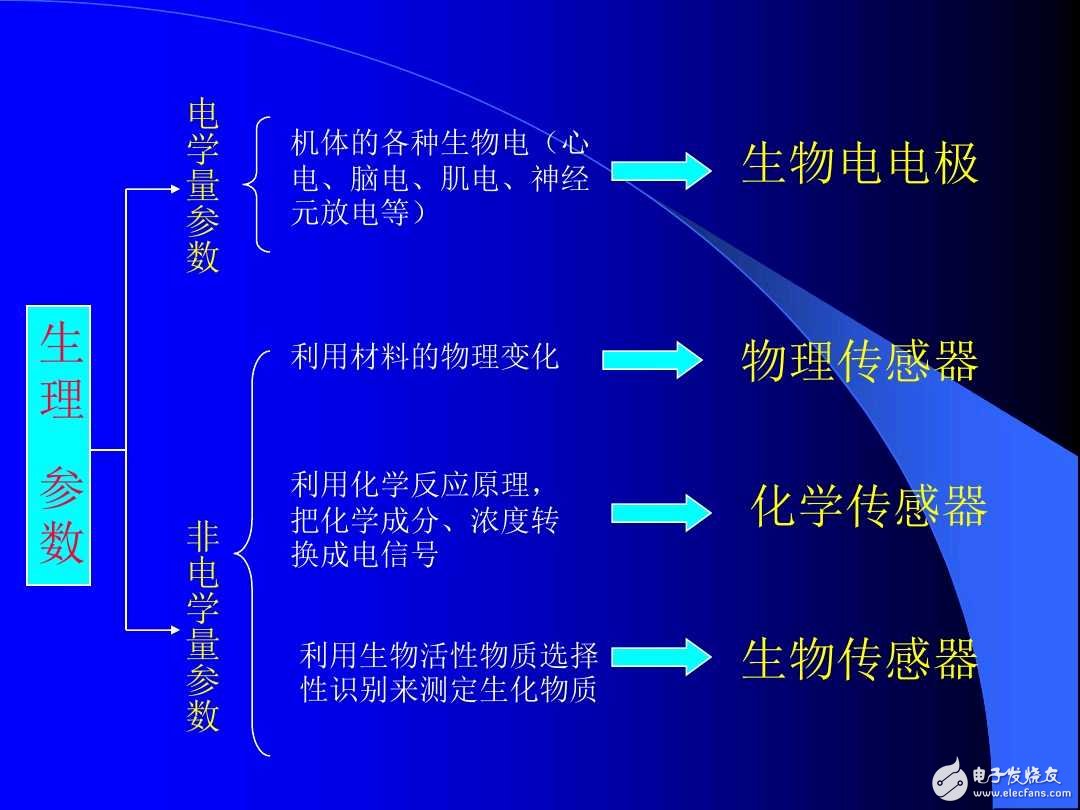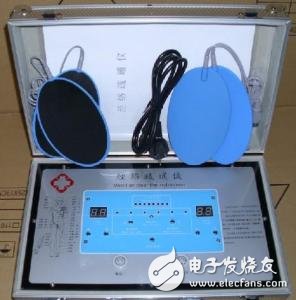Medical sensors are essential components in the field of medical instruments and experimental research. These devices are designed to detect various biological signals and convert them into electrical signals that are easy to process. As shown in the block diagram of the medical measurement system, the sensor is the first and most critical link in the system, acting as a bridge between the medical instrument and the human body. Without accurate and reliable medical sensors, subsequent processing steps would not yield correct results. Moreover, medical sensors provide crucial information for diagnostic equipment, often determining the measurement principles and structural design of medical devices.

Medical measurement system block diagram
**The Role of Medical Sensors**
**(1) Providing Diagnostic Information:**
Medical sensors collect vital signs such as heart sounds, blood pressure, pulse, blood flow, respiration, and body temperature, which are essential for clinical diagnosis and medical research.
**(2) Monitoring:**
They continuously measure key physiological parameters over long periods, helping track patient recovery and alerting healthcare professionals when abnormalities occur. For example, after heart surgery, patients need constant monitoring of temperature, pulse, arterial and venous pressure, respiration, and ECG.
**(3) Body Control:**
Some sensors help control physiological processes by detecting internal signals. For instance, an automatic ventilator uses breathing sensors to synchronize with the patient’s respiratory rhythm, while an electronic prosthesis may use electromyographic signals to control movement.
**(4) Clinical Examination:**
In addition to direct body measurements, medical sensors can analyze biochemical data from bodily fluids like blood, urine, and saliva. This type of information is vital for diagnosing diseases and is typically obtained through chemical and biosensors.
**Classification of Medical Sensors**
**According to Working Principle:**
 **(1) Physical Sensors:**
These sensors operate based on physical phenomena such as strain, capacitance, induction, piezoelectricity, thermoelectricity, and photoelectricity. They can be classified by working principle or the quantity they detect. Examples include displacement, pressure, vibration, and temperature sensors. Sensor codes, such as CWY-WL-10 (eddy current displacement sensor) or CY-YZ-2A (piezoresistive pressure sensor), follow specific naming conventions.
**(2) Chemical Sensors:**
Chemical sensors detect specific chemical components in the body, such as ions or gases, and convert them into electrical signals. They often use functional membranes to selectively identify target substances. Common types include ion-selective electrodes, gas-sensing electrodes, humidity sensors, and semiconductor-based gas sensors.
**(3) Biosensors:**
Biosensors combine biological components—like enzymes, antibodies, or cells—with sensing technology to detect biochemical reactions. They are categorized by the sensitive material used, such as enzyme sensors, immunosensors, or cell sensors. Depending on the signal conversion method, they can also be classified as electrochemical, semiconductor, or photometric biosensors.
**(4) Bioelectric Electrode Sensors:**
These sensors measure bioelectric signals such as electrocardiograms (ECG), electroencephalograms (EEG), and electromyograms (EMG).
**(1) Physical Sensors:**
These sensors operate based on physical phenomena such as strain, capacitance, induction, piezoelectricity, thermoelectricity, and photoelectricity. They can be classified by working principle or the quantity they detect. Examples include displacement, pressure, vibration, and temperature sensors. Sensor codes, such as CWY-WL-10 (eddy current displacement sensor) or CY-YZ-2A (piezoresistive pressure sensor), follow specific naming conventions.
**(2) Chemical Sensors:**
Chemical sensors detect specific chemical components in the body, such as ions or gases, and convert them into electrical signals. They often use functional membranes to selectively identify target substances. Common types include ion-selective electrodes, gas-sensing electrodes, humidity sensors, and semiconductor-based gas sensors.
**(3) Biosensors:**
Biosensors combine biological components—like enzymes, antibodies, or cells—with sensing technology to detect biochemical reactions. They are categorized by the sensitive material used, such as enzyme sensors, immunosensors, or cell sensors. Depending on the signal conversion method, they can also be classified as electrochemical, semiconductor, or photometric biosensors.
**(4) Bioelectric Electrode Sensors:**
These sensors measure bioelectric signals such as electrocardiograms (ECG), electroencephalograms (EEG), and electromyograms (EMG).
 **Other Classification Methods:**
- **By Detection Type:** Shift, flow, temperature, speed, and pressure sensors.
- **By Sensory Function:** Vision sensors (optical), hearing sensors (piezoelectric, capacitive), and olfactory sensors (gas-sensitive).
- **By Material and Structure:** Additional classifications depend on sensor materials, construction, and energy conversion efficiency.
Each classification method helps better understand the functionality and application of medical sensors in different contexts, supporting advancements in both medical diagnostics and bionic technologies.
**Other Classification Methods:**
- **By Detection Type:** Shift, flow, temperature, speed, and pressure sensors.
- **By Sensory Function:** Vision sensors (optical), hearing sensors (piezoelectric, capacitive), and olfactory sensors (gas-sensitive).
- **By Material and Structure:** Additional classifications depend on sensor materials, construction, and energy conversion efficiency.
Each classification method helps better understand the functionality and application of medical sensors in different contexts, supporting advancements in both medical diagnostics and bionic technologies.

Medical measurement system block diagram


Stage Laser Lights,Mini Laser Stage Lighting,Mini Laser Disco Lights,Professional Laser Stage Lighting
Guangzhou Cheng Wen Photoelectric Technology Co., Ltd. , https://www.cwledwall.com